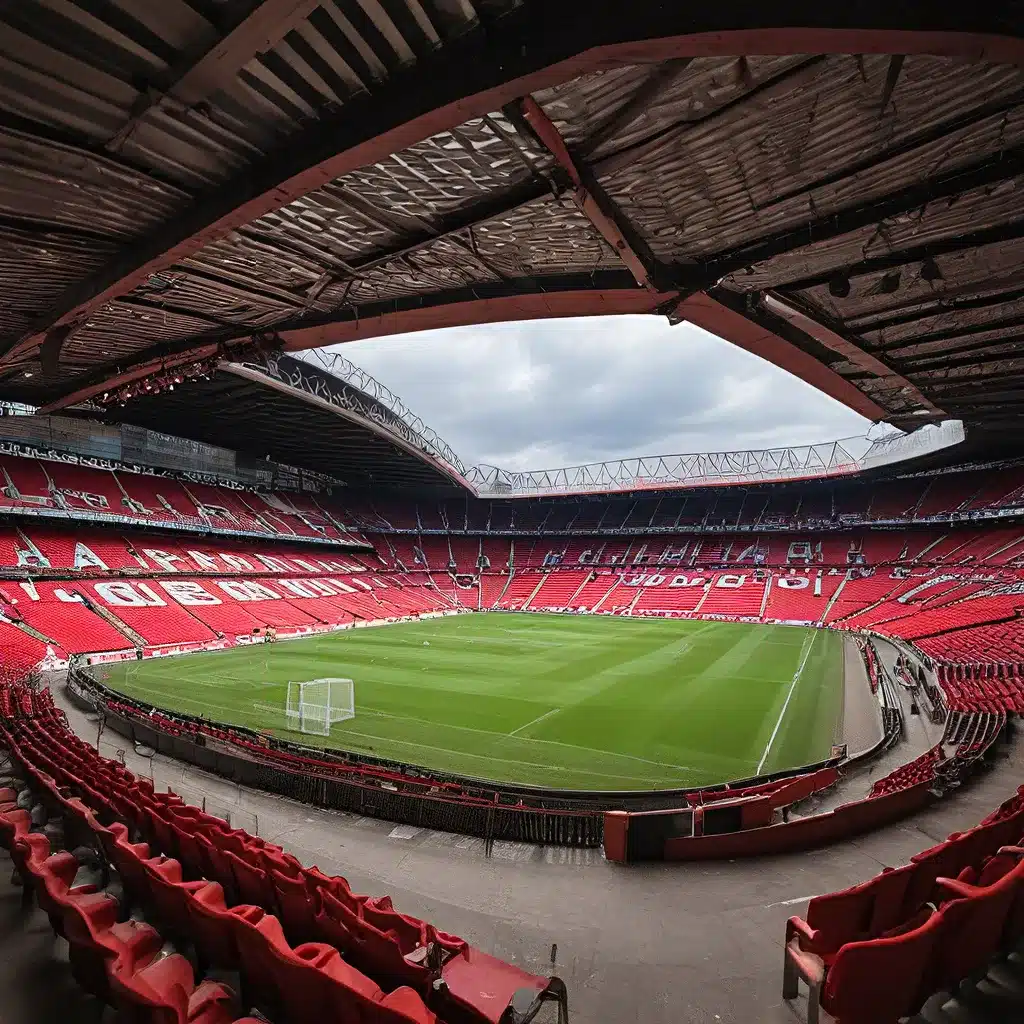
Old Trafford, the iconic home of Manchester United Football Club, is a true architectural marvel that has captivated soccer enthusiasts and design aficionados alike. This historic stadium, nestled in the heart of Greater Manchester, has witnessed the triumphs and tribulations of one of the world’s most successful and beloved football clubs.
A Legacy of Sporting Passion
The story of Old Trafford begins in the late 19th century when Manchester United, then known as Newton Heath LYR Football Club, was formed in 1878. As the club’s popularity and success grew, it became evident that a larger and more modern stadium was needed to accommodate their growing fan base. In 1909, the decision was made to construct a new ground, and the site of the present-day Old Trafford was selected.
The construction of the stadium was no easy feat, as the project faced numerous challenges, including the outbreak of World War I. However, the determination and commitment of the club’s leadership, along with the unwavering support of the local community, ensured that the stadium would be completed. On February 19, 1910, Old Trafford opened its doors to the public, ushering in a new era for Manchester United.
Architectural Brilliance and Evolution
The original design of Old Trafford was a testament to the architectural ingenuity of the time. Renowned architect Archibald Leitch, known for his work on several iconic British stadiums, was tasked with the project. Leitch’s design combined functionality with aesthetic appeal, creating a stadium that was both practical and visually striking.
The stadium’s distinctive red-brick exterior, pitched roofs, and arched windows were hallmarks of the Edwardian era’s architectural style. The ground’s capacity at the time was around 80,000, making it one of the largest stadiums in the country. Over the years, Old Trafford has undergone numerous renovations and expansions, each one aimed at improving the fan experience and modernizing the facilities.
One such renovation project was the introduction of the “OT Art Trail” in 2020, which brought a touch of community and artistic expression to the stadium’s surroundings. The project, funded by Arts Council England, saw the creation of several large-scale murals adorning the walls and buildings around Old Trafford, celebrating the diversity and unity of the local community.
The Iconic North Stand
Perhaps the most iconic feature of Old Trafford is the North Stand, which has become synonymous with the stadium’s grandeur and legacy. Constructed in the 1930s, the North Stand was a bold and innovative addition, featuring a distinctive cantilever design that allowed for a larger and more unobstructed viewing area for spectators.
The North Stand’s architectural elegance and structural integrity have stood the test of time, becoming a beloved and recognizable landmark for Manchester United supporters. Over the years, the stand has undergone several renovations and expansions, but its essential character has remained intact, serving as a testament to the enduring brilliance of the original design.
Embracing Modernity and Sustainability
As the world of football continues to evolve, Old Trafford has embraced the need for modernization and sustainability. In recent years, the stadium has undergone a series of upgrades and renovations aimed at enhancing the fan experience and reducing its environmental impact.
One notable example is the installation of a state-of-the-art lighting system that has significantly improved the lighting quality and reduced energy consumption. Additionally, the club has made strides in waste management, implementing recycling programs and introducing more sustainable catering options for fans.
Dominique Fayolle, a renowned architect and sustainability expert, has praised the club’s efforts, stating, “Manchester United has demonstrated a deep commitment to sustainability, ensuring that Old Trafford remains a shining example of how iconic sports venues can adapt to the demands of the modern era while preserving their architectural heritage.”
A Living, Breathing Icon
Old Trafford’s significance extends far beyond its role as a sports venue; it is a living, breathing icon that has become inextricably linked to the cultural fabric of Manchester and the broader footballing world. The stadium’s rich history, architectural brilliance, and unwavering connection to the local community have made it a must-visit destination for fans and architectural enthusiasts alike.
As Manchester United continues to write new chapters in its storied history, Old Trafford remains a testament to the enduring power of design, passion, and community. Whether you’re a devoted Red Devil or a lover of architectural marvels, a visit to this iconic stadium is sure to leave a lasting impression.
Exploring the Stadium Journey
For those eager to delve deeper into the world of iconic stadiums, Old Stadium Journey offers a comprehensive and immersive experience. This website is dedicated to exploring the history, design, and cultural significance of some of the most remarkable sports venues around the globe, including the legendary Old Trafford.
Through detailed articles, interactive features, and expert insights, Old Stadium Journey provides a unique opportunity to discover the architectural and historical gems that have captivated sports enthusiasts for generations. Whether you’re planning a visit or simply curious to learn more, this resource is a must-visit for anyone with a passion for the built environment and the enduring legacy of the world’s most iconic stadiums.

